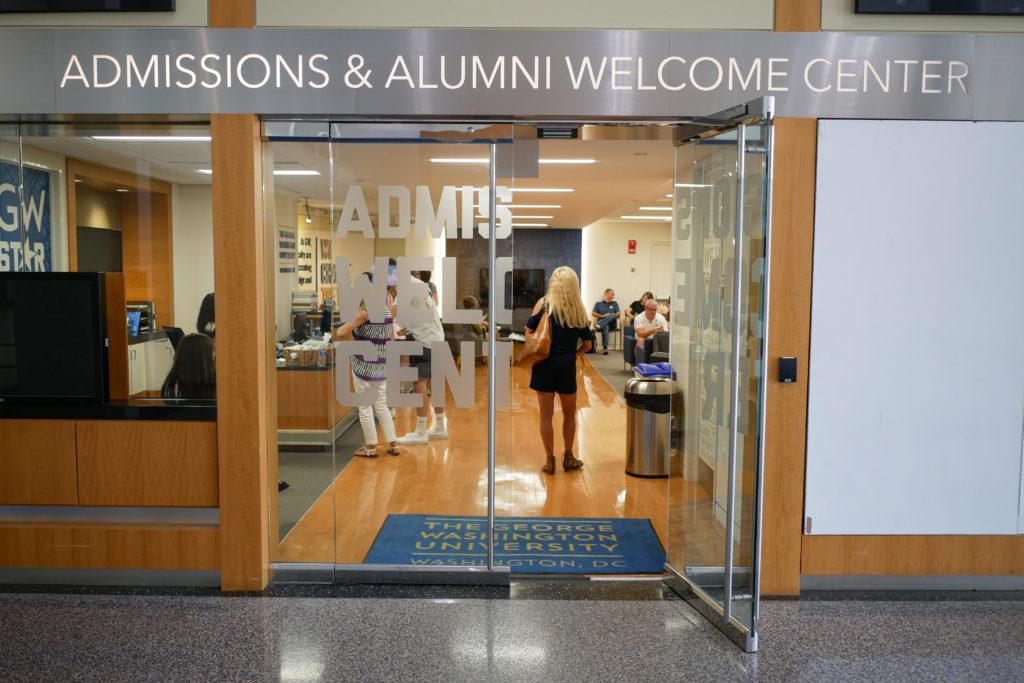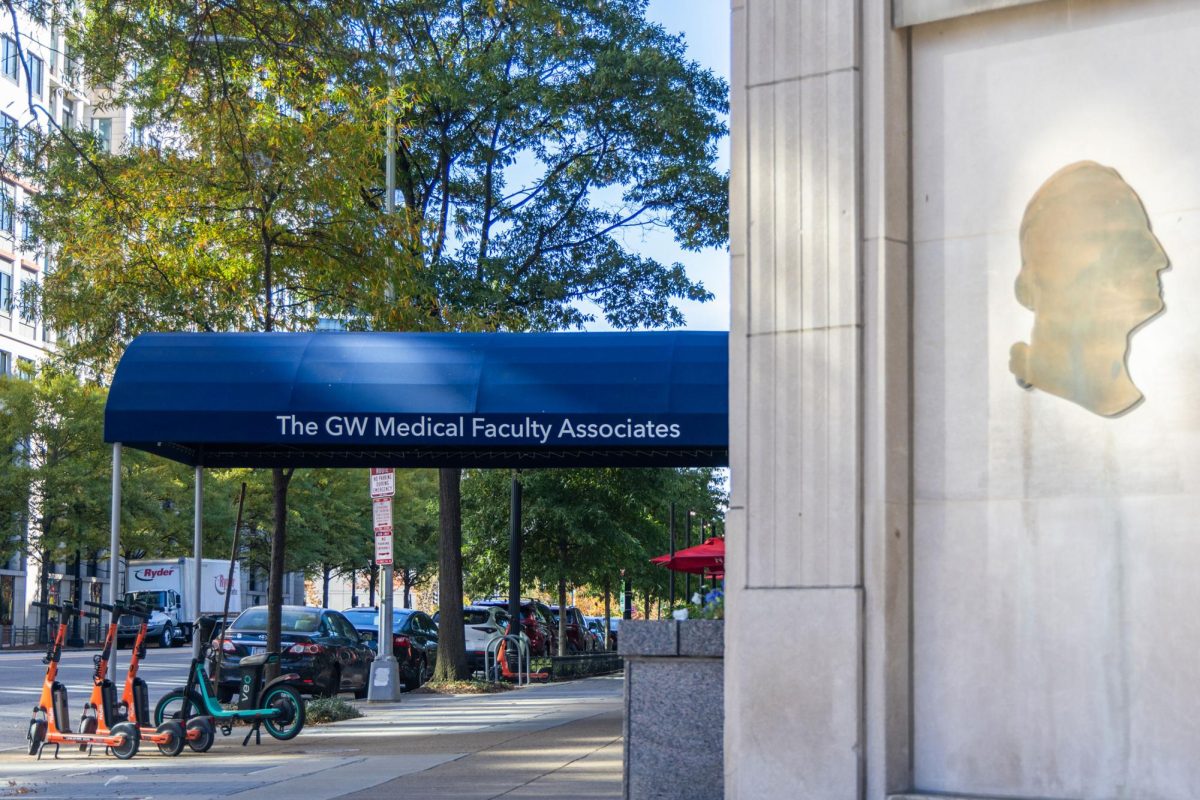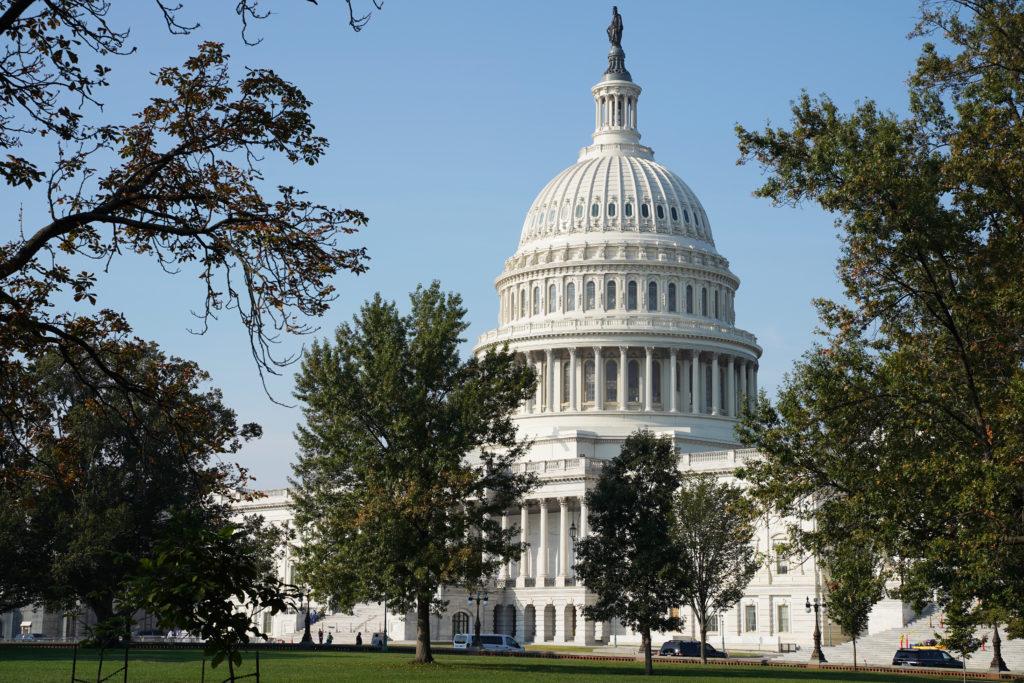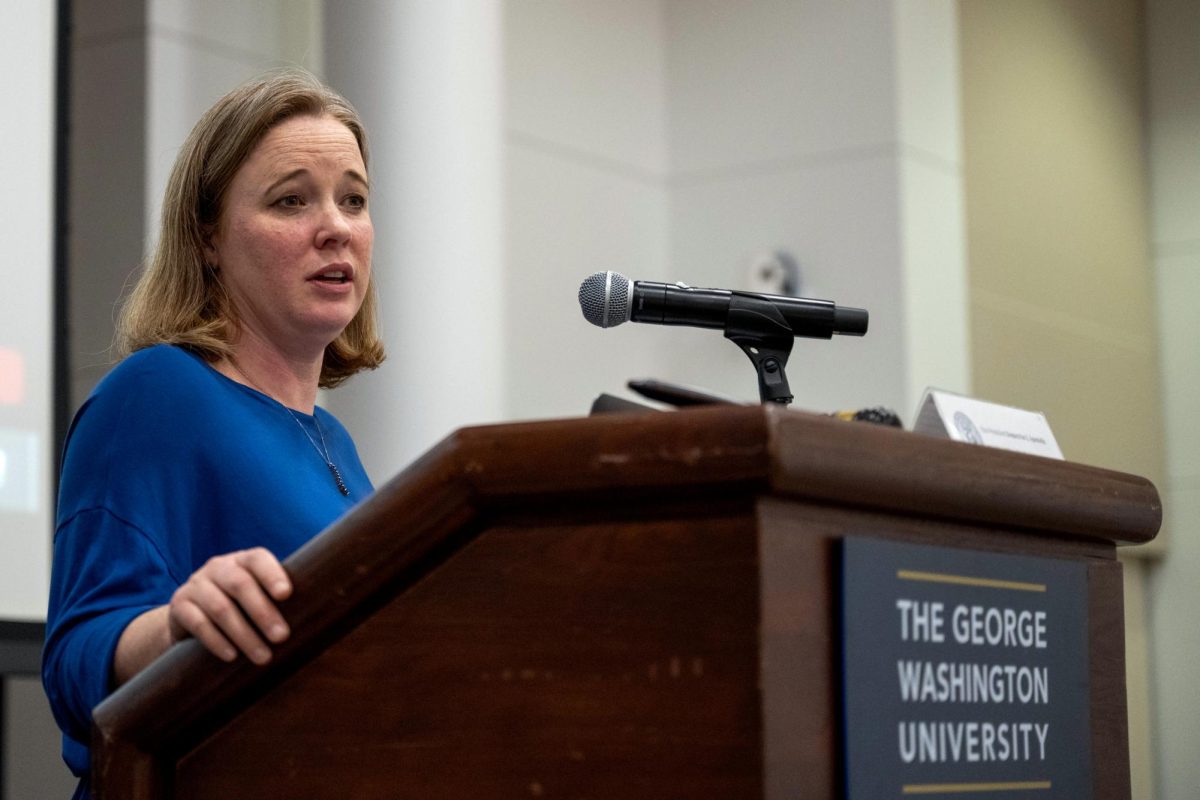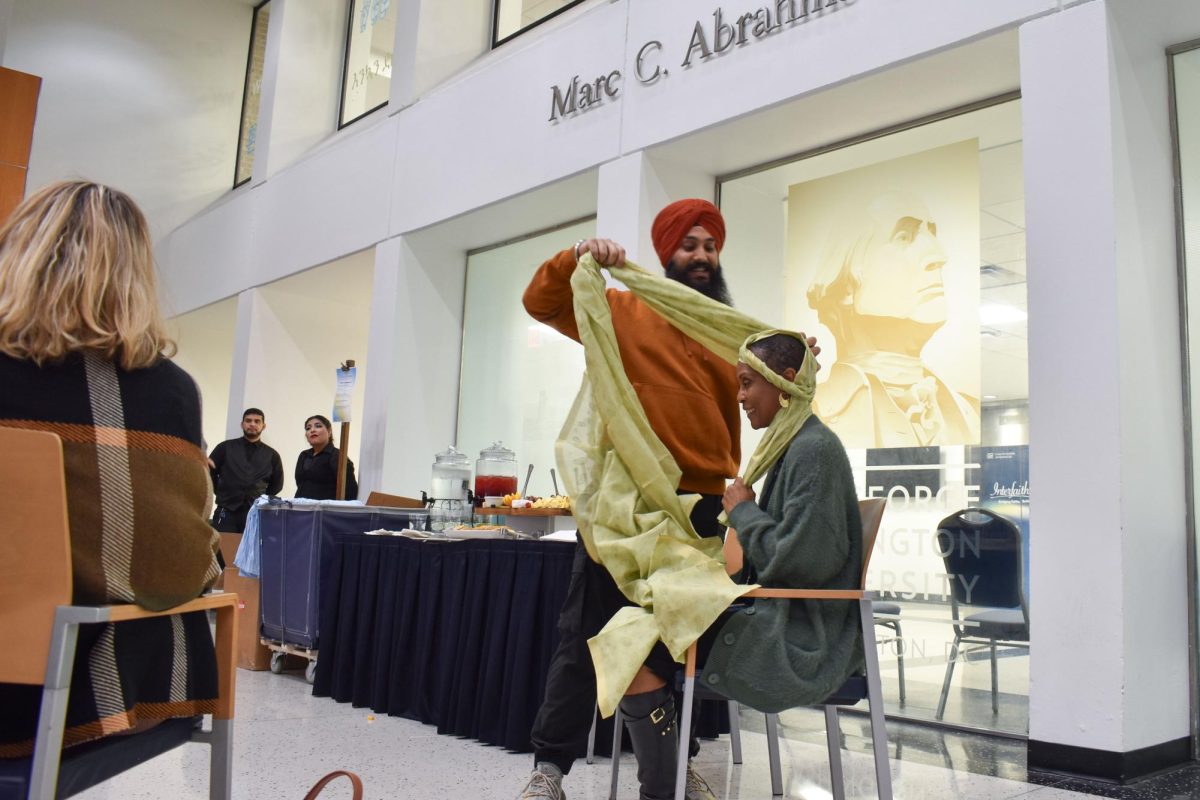Officials admitted the most selective incoming class this year since 2013.
Ben Toll, the dean of undergraduate admissions, said the University received 26,804 applications for the Class of 2024 and offered admission to 10,374 students through early and regular decision rounds – a seven-year low admission rate of roughly 38.7 percent. Toll said the rate is the result of University President Thomas LeBlanc’s plan to reduce the incoming class size to 2,250 students excluding transfers.
“The acceptance rate decreased this year as we aim to bring in a smaller first-year class in line with President LeBlanc’s strategic initiatives,” he said in an email.
One of the hallmarks of LeBlanc’s next strategic plan was reducing the undergraduate population by nearly 20 percent, but the president said earlier this month – after admissions decisions were released – that officials will revisit the planned enrollment cut given the uncertain financial and enrollment impacts of the COVID-19 pandemic.
“There’s a lot of uncertainty right now across all of higher education with respect to enrollment,” LeBlanc said in an interview earlier this month.
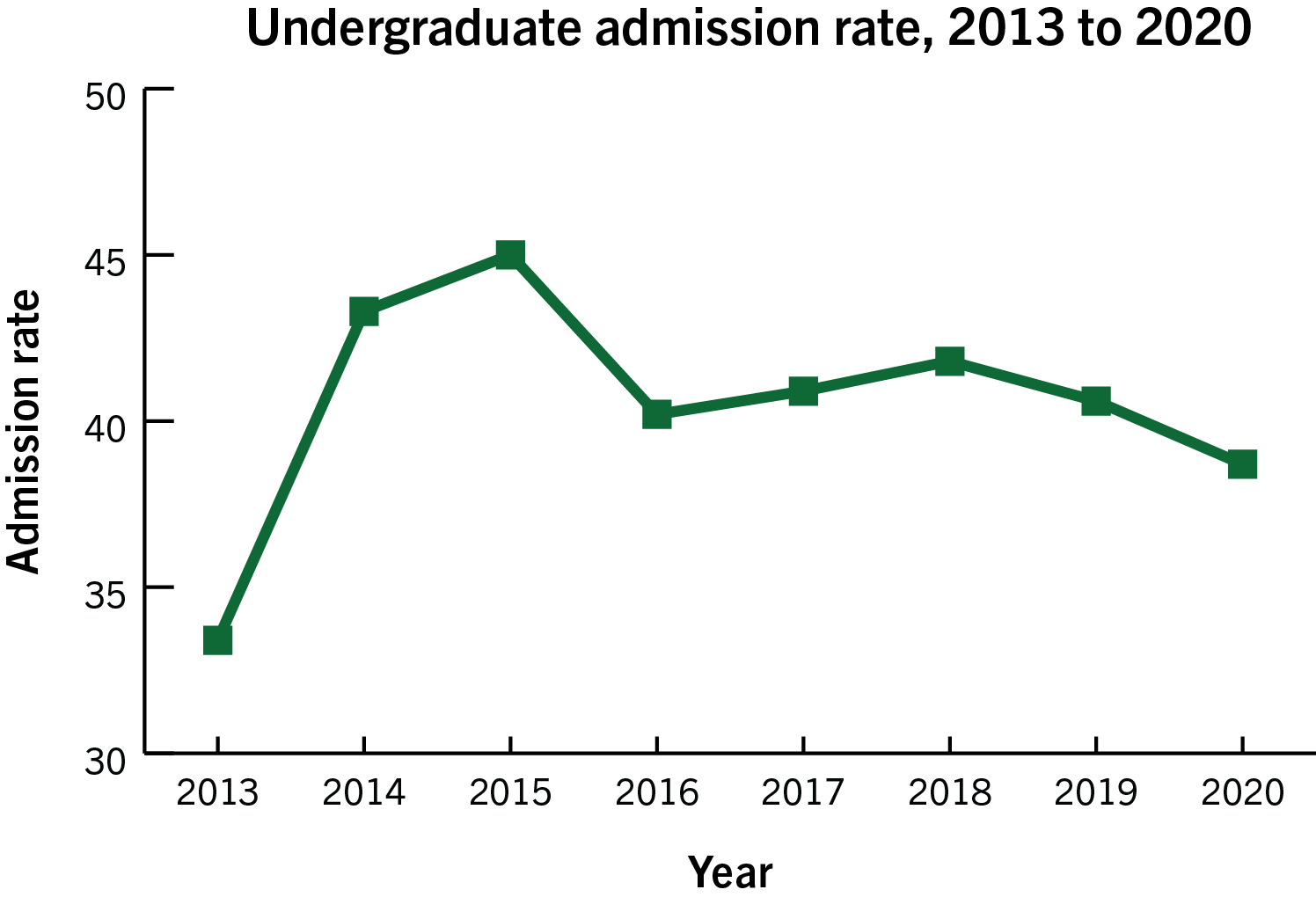
Sidney Lee | Staff Designer
Source: Institutional data
The number of applications decreased slightly – about 1 percent – from last year when GW received 27,070 applications. Officials accepted 40.6 percent of applicants last year, and the admission rate has hovered just above 40 percent for the past six years.
Toll said admissions staff did not factor in considerations related to the coronavirus in admissions decisions. Regular decisions were released on March 20, which is typical compared to previous years.
“We anticipate the changing landscape of COVID-19 increases the likelihood of waitlist activity,” Toll said in an email. “We are actively monitoring our international yield rates due to concerns surrounding student visa availability and possible travel restrictions.”
Officials said at a Faculty Senate meeting last month that the pandemic could cause a drop in the number of international students who choose to enroll. International students provide $166 million in revenue to the University on an annual basis, LeBlanc said earlier this month.
Toll added that officials launched virtual transfer information sessions because the Admissions Welcome Center, like most other offices and buildings on campus, is closed, and administrators have suspended all on-campus recruitment events and off-campus transfer recruitment events through the end of the semester in response to the pandemic.
Administrators recommended last month that all faculty and staff delay or cancel all non-essential domestic travel until further notice.
The admissions office is maintaining its May 1 commitment deadline in the wake of the pandemic to release transfer decisions and notify students on the waitlist in a timely manner.
“Our transfer application deadline is April 15, and we look forward to reviewing those applications,” Toll said.
Provost Brian Blake said at a senate meeting earlier this month that the number of students who had committed to GW through early decision has fallen slightly short of projections by a few dozen students. The discrepancy is likely a result of disruptions caused by COVID-19, and officials expect more deposits to be submitted in the coming weeks, Blake said.
He said officials accepted about 5,000 students to the waitlist this year, and Toll and Ed Gillis – the interim vice provost of enrollment management – decided to admit a few students from the waitlist already in the wake of COVID-19 to boost enrollment, Blake said.
“We’re trying to protect enrollments with a lot of caution,” Blake said at the meeting. “Basically, we preemptively corrected on this by activating a small number of students from the waitlist earlier, which gives us a better chance of getting those students.”
Blake said the total number of students who have committed to GW so far is slightly ahead of model projections, while the number of international students who have committed is trailing projections by about three dozen students, although it is still early in the process.
He said in February that GW saw an increase in domestic applications this year but lost “a lot” of international applications – predominantly those from China – likely due to environmental factors. The applicant pool was more diverse in terms of underrepresented minorities “across the board” and also included an increase in STEM applicants, Blake said.
“A number of our peer market basket institutions have much fewer applications this year – some are on the border of 5 percent or 10 percent,” Blake said. “It has been a really difficult year across the system.”


